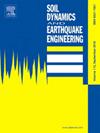Experimental study of dynamic performance of loose sandy soil improved with micro-Organisms
IF 4.2
2区 工程技术
Q1 ENGINEERING, GEOLOGICAL
引用次数: 0
Abstract
Due to the increasing number of construction projects, various methods, including more environmentally friendly methods, are used to increase the strength and bearing capacity of soil. Bio-cementation method is one of the newest methods that uses bacteria to form calcium carbonate crystals to make high-strength Metamorphic products. This process can stabilize the soil without breaking the original structure. One of these processes, which are common in nature, is the microbiological deposition of calcium carbonate by enzymatic hydrolysis of urea. Due to the size of soil grains and the size of bacteria used in sediment production, these bacteria will be able to produce sediment in silty, clay and sandy soils that form a wide range of soils. In this research, the effect of microbially induced carbonate precipitation (MICP) on the cyclic properties (liquefaction resistance, secant shear modulus and damping ratio) of loose sand is investigated via performing cyclic triaxial tests. Results revealed that carbonate precipitation could significantly increase the liquefaction resistance of Nikabad sand. So that the required cycles to reach the liquefaction criteria was increased from 6 for unstabilized sand to 97 (at cyclic stress ratio (CSR) of 0.2) for 4 times grouted carbonate precipitated sand. Also, this value was increased to 127 for 6 times grouted carbonate precipitated sand. Moreover, test findings show that CSR has an important effect on liquefaction resistance such that, the number of cycles leading to liquefaction decreased from 127 to 46 with the increase of CSR from 0.2 to 0.3 for 6 times grouted carbonate precipitated sand. Due to the carbonate precipitation, the secant shear modulus of sand increased by up to 67 %, and also the damping ratio of sand increased by up to 50 %
求助全文
约1分钟内获得全文
求助全文
来源期刊

Soil Dynamics and Earthquake Engineering
工程技术-地球科学综合
CiteScore
7.50
自引率
15.00%
发文量
446
审稿时长
8 months
期刊介绍:
The journal aims to encourage and enhance the role of mechanics and other disciplines as they relate to earthquake engineering by providing opportunities for the publication of the work of applied mathematicians, engineers and other applied scientists involved in solving problems closely related to the field of earthquake engineering and geotechnical earthquake engineering.
Emphasis is placed on new concepts and techniques, but case histories will also be published if they enhance the presentation and understanding of new technical concepts.
 求助内容:
求助内容: 应助结果提醒方式:
应助结果提醒方式:


